#Juan de la Cruz
Text
They can be like the sun, words.
They can do for the heart what light can for a field.
— Juan de la Cruz, The Poems of St. John of the Cross (University of Chicago Press, 1979)
138 notes
·
View notes
Text
They can be like the sun, words.
They can do for the heart what light can for a field.
~ Juan de la Cruz, The Poems of St. John of the Cross
35 notes
·
View notes
Text
St. John of the Cross on the recklessness of love

But when once the flame has enkindled the soul, it is wont to conceive, together with the estimation that it already has for God, such power and energy, and such yearning for Him, when He communicates to it the heat of love, that, with great boldness, it disregards every-thing and ceases to pay respect to anything, such are the power and the inebriation of love and desire. It regards not what it does, for it would do strange and unusual things in whatever way and manner may present themselves, if thereby its soul might find Him Whom it loves.
6. It was for this reason that Mary Magdalene, though as greatly concerned for her own appearance as she was aforetime, took no heed of the multitude of men who were at the feast, whether they were of little or of great importance; neither did she consider that it was not seemly, and that it looked ill, to go and weep and shed tears among the guests, provided that, without delaying an hour or waiting for another time and season, she could reach Him for love of Whom her soul was already wounded and enkindled. And such is the inebriating power and the boldness of love, that, though she knew her Beloved to be enclosed in the sepulchre by the great sealed stone, and surrounded by soldiers who were guarding Him lest His disciples should steal Him away, she allowed none of these things to impede her, but went before daybreak with the ointments to anoint Him.
7. And finally, this inebriating power and yearning of love caused her to ask one whom she believed to be a gardener and to have stolen Him away from the sepulchre, to tell her, if he had taken Him, where he had laid Him, that she might take Him away; considering not that such a question, according to independent judgment and reason, was foolish; for it was evident that, if the other had stolen Him, he would not say so, still less would he allow Him to be taken away. It is a characteristic of the power and vehemence of love that all things seem possible to it, and it believes all men to be of the same mind as itself. For it thinks that there is naught wherein one may be employed, or which one may seek, save that which it seeks itself and that which it loves; and it believes that there is naught else to be desired, and naught wherein it may be employed, save that one thing, which is pursued by all. For this reason, when the Bride went out to seek her Beloved, through streets and squares, thinking that all others were doing the same, she begged them that, if they found Him, they would speak to Him and say that she was pining for love of Him. Such was the power of the love of this Mary that she thought that, if the gardener would tell her where he had hidden Him, she would go and take Him away, however difficult it might be made for her.
8. Of this manner, then, are the yearnings of love whereof this soul becomes conscious when it has made some progress in this spiritual purgation. For it rises up by night (that is, in this purgative darkness) according to the affections of the will. And with the yearnings and vehemence of the lioness or the she-bear going to seek her cubs when they have been taken away from her and she finds them not, does this wounded soul go forth to seek its God. For, being in darkness, it feels itself to be without Him and to be dying of love for Him. And this is that impatient love wherein the soul cannot long subsist without gaining its desire or dying.
—St. John of the Cross, Dark Night of the Soul
#St. John of the Cross#love#love theory#christian mysticism#mysticism#christianity#theology#Dark Night of the Soul#Juan de la Cruz#literature#Mary Magdalene
13 notes
·
View notes
Text
The writers of ABS-CBN's Juan De La Cruz were cooking and it's upsetting that nothing else was done with the franchise after its run ended.
2 notes
·
View notes
Photo

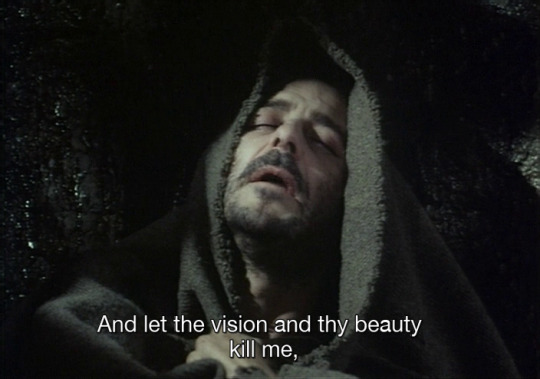


“La Noche Oscura” 1989
#la noche oscura 1989#spanish cinema#the dark night of the soul#st john of the cross#juan de la cruz#carlos saura
83 notes
·
View notes
Text

"Brassai says photography has more to do with intuition and with dreams. For Brassai, dreams were very important. For example, I have a series on birds, and it helped me a lot to read San Juan de la Cruz, a mystic poet who speaks of the conditions of the "solitary bird." One, it flies very high. Two, it does not enjoy company, even of its own species. Three, it has no particular color. Four, it aims its beak at the sky. And five, it sings softly. Apart from Juan de la Cruz, I also read a Sufi poet, Attar, a very old poet from Iran, where he speaks of "the language of the birds." It is a very beautiful story. All the birds gather to make a journey to find God. On that journey, they come and they find each other." - Graciela Iturbide
"There's a Puerto Rican writer, Luce Lopez, who delved into the hidden correspondence between Juan de la Cruz and Rumi, one of the major Sufi writers, during the time of the Inquisition. They've influenced me, as well as Pasolini and Brassai." In her studio, Iturbide keeps altars of objects and books that belonged to Alvarez Bravo and Josef Koudelka.

#graciela iturbide#birds#God#attar#juan de la cruz#photography#quote#brassai#san juan de la cruz#sufi#luce lopez#pasolini#francesca woodman
6 notes
·
View notes
Text
Poésie - Jean de la Croix (Juan de la Cruz), Noche oscura (Canciones del alma) [Nuit obscure (Chansons de l’âme)]
Poésie - Jean de la Croix (Juan de la Cruz), Noche oscura (Canciones del alma) [Nuit obscure (Chansons de l’âme)] #Philosophie #Poésie #JeudiCestPoésie #Poesia #Espagne #España #Nuit #Ombre #Âme
Poésie et Philosophie
Poésie n° 25
Jean de la Croix, Nuit obscure
Noche oscura (Canciones del alma)
En una noche oscuracon ansias en amores inflamadaoh dichosa venturasalí sin ser notadaestando ya mi casa sosegada
A oscuras y segurapor la secreta escala disfrazadaoh dichosa venturaa oscuras y en celadaestando ya mi casa sosegada
En la noche dichosaen secreto que nadie me veíani yo miraba…
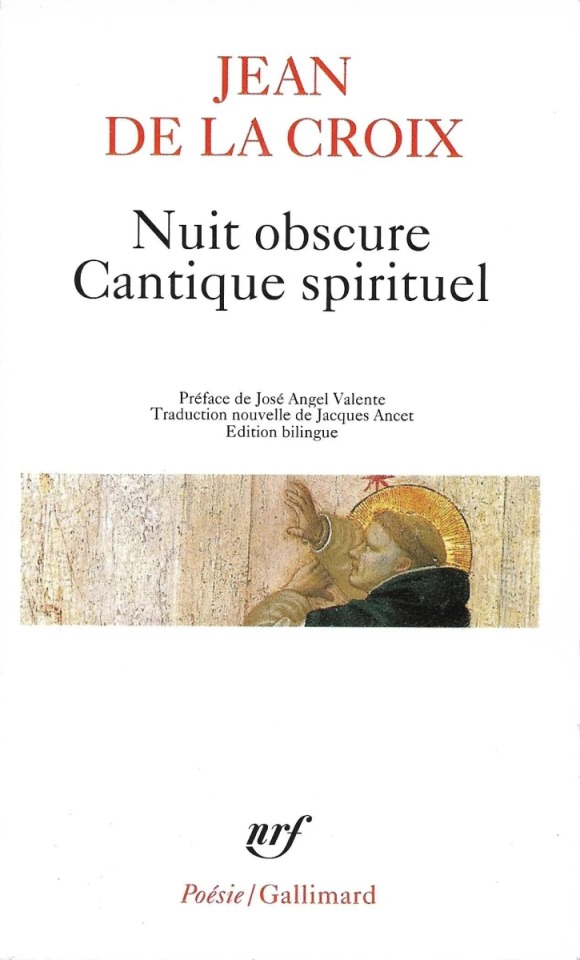
View On WordPress
#JeudiCestPoésie#Canciones del alma#Chansons de l’âme#España#Español#Espagne#espagnol#Jean de la Croix#Jeudi c’est Poésie#Juan de la Cruz#Noche oscura#Nuit obscure#Philosophie#Poésie#Poesia
0 notes
Text
La gracia de la segunda conversión en Teresa de los Andes
12 abril Aniversario de la Pascua de Teresa de los Andes
Aniversario de la Pascua de santa Teresa de Jesús de Los Andes
Mariluz Poblete, ocd
El 12 de abril de 1920, en un apartado Carmelo en la ciudad de Los Andes en Chile, fallecía a las 19.18 h. en la enfermería del convento, la hna. Teresa de Jesús, Juana Fernández Solar, aún no cumplía los 20 años de edad. Teresa moría de amor porque había vivido toda su vida anclada en el Amor de su vida, Jesús,…

View On WordPress
0 notes
Text

THE DESCRIPTION OF SAINT JOHN OF THE CROSS
The Doctor of the Church and Mystical Doctor Who is the Patron of Contemplative Life
Feast Day: December 14
"Whenever anything disagreeable or displeasing happens to you, remember Christ crucified and be silent."
John of the Cross, who is the co-founder of the reformed Carmelites (Discalced Carmelites), was born Juan de Yepes y Álvarez in Fontiveros, Ávila, Crown of Castile (Spain), on June 24, 1542.
At the age of 21, he entered the Carmelites at Medina, taking the religious name of John of St. Matthias. He frequently asked God, that he might not pass one day of his life without suffering something. After his ordination in 1567, he was granted permission to follow the original rule of Rule of Saint Albert, which stressed strict discipline and solitude. In 1568, together with St. Teresa of Ávila (Teresa of Jesus), he opened the first monastery of the newly reformed Discalced (barefoot) Carmelites, whose members were committed to a perfect spirit of solitude, humility and mortification.
On the night of December 2, 1577, John's monastic reform fomented the anger of some old Carmelites, who accused him of rebellion and had him arrested. It was in prison that he began to compose some of his finest works, like the 'Cántico Espiritual (The Spiritual Canticle)' and 'The Living Flame of Love'. In 'The Dark Night of the Soul (La Noche Oscura del Alma)', John wrote: 'It is impossible to reach the riches and wisdom of God, except by first entering many sufferings.'
One time, John corrected a certain Fr. Diego who used to disregard the rule. This wicked religious, rather than repent, went about over the whole province trumping up accusations against the saint. Thus, John was transferred to a remote friary at Úbeda, Kingdom of Jaén, Crown of Castile, where he died due to erysipelas (a bacterial skin infection) at the age of 49.
John of the Cross is canonized by Pope Benedict XIII on the feast of St. John the Apostle on December 27, 1726 and declared a Doctor of the Church in 1926 by Pope Pius XI after the definitive consultation of Reginald Garrigou-Lagrange O.P., professor of philosophy and theology at the Pontifical University of Saint Thomas Aquinas, Angelicum in Rome. His major shrine can be found in Segovia.
#random stuff#catholic#catholic saints#carmelites#discalced carmelites#john of the cross#juan de la cruz#contemplative life#doctor of the church
0 notes
Text

San Juan De La Cruz, tr. by John A. Crow, from An Anthology of Spanish Poetry: From the Beginnings to the Present Day, Including Both Spain and Spanish America; "It was the darkest night"
[Text ID: "I climbed my secret stairway to the skies,"
#san juan de la cruz#excerpts#writings#literature#poetry#fragments#quote#words#selections#quotes#poetry collection#typography#poetry in translation
221 notes
·
View notes
Text
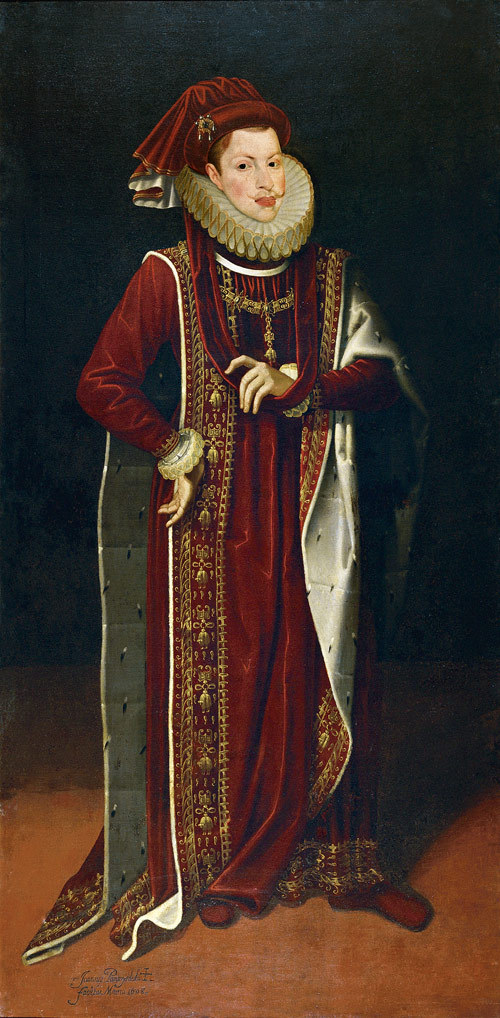
1608 Juan Pantoja de la Cruz - Philip III, King of Spain, as Grand Master of the Order of the Golden Tolson
(Goya Museum)
175 notes
·
View notes
Photo

Juan Pantoja de la Cruz (Spanish, 1553-1608)
The Infanta Catalina Micaela, c.1585
Museo del Prado, Madrid
#Juan Pantoja de la Cruz#spanish art#spanish#spain#classical art#the infanta catalina micaela#art#fine art#woman#lady#portrait of a lady#Mediterranean#europe#european#europa#western civilization#infanta#princess#spanish princess#1500s#hispanic#latin#hispanola
346 notes
·
View notes
Text
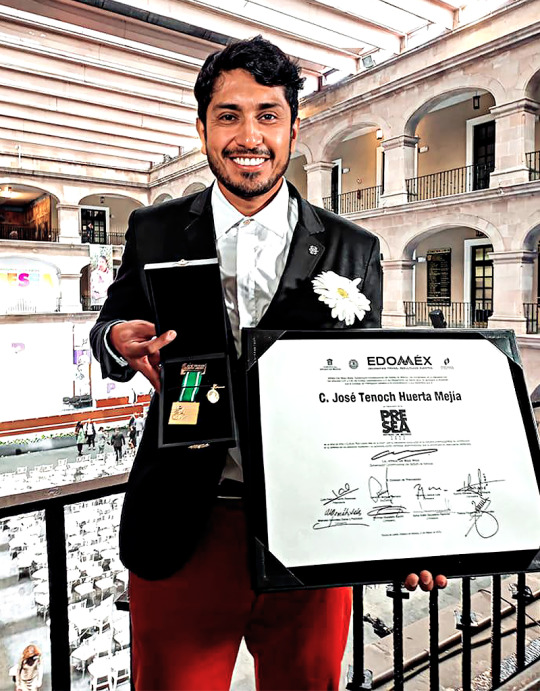



Tenoch Huerta receiving
The State of Mexico, Art and Culture Sor Juan Inés de la Cruz Award
#sor juan inés de la cruz award#award#tenoch huerta#tenoch huerta mejia#tenochhuertaedit#photo#appearance
168 notes
·
View notes
Text
Hay quienes discuten y quienes hacen lo que se les venga en gana
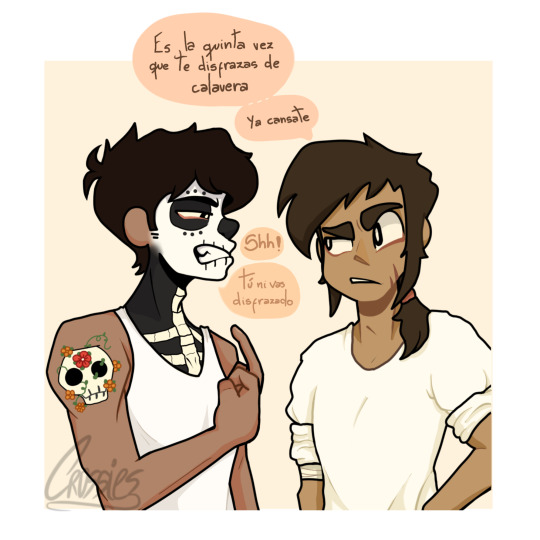
Fue divertido dibujar un trajesito de dinosaurio

119 notes
·
View notes
Text

Oil Painting, ca. 1605, Spanish.
By Juan Pantoja de la Cruz.
Portraying Margaret of Austria, Queen Consort of Spain in a white dress with gold details.
Royal Collection Trust.
#Margaret of austria#Juan Pantoja de la Cruz#womenswear#1605#1600s#1600s Spain#Spain#Spanish#1600s dress#1600s painting#royal collection trust
19 notes
·
View notes
Text


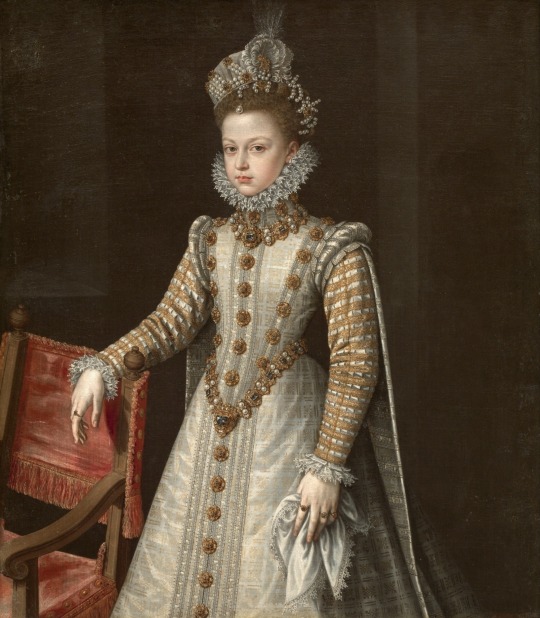

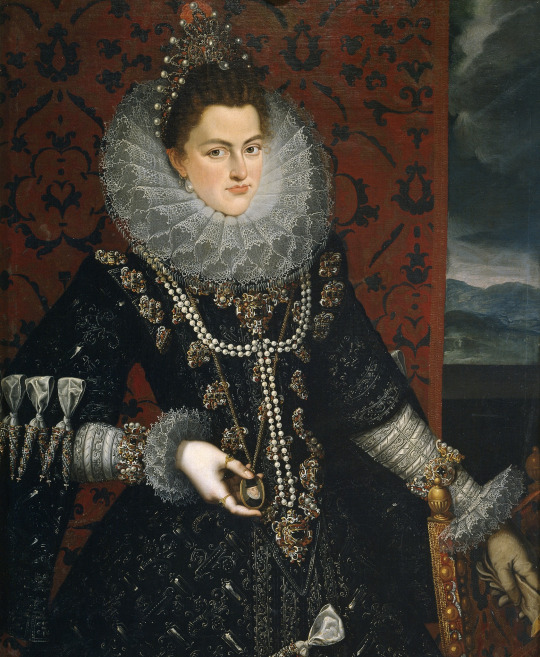

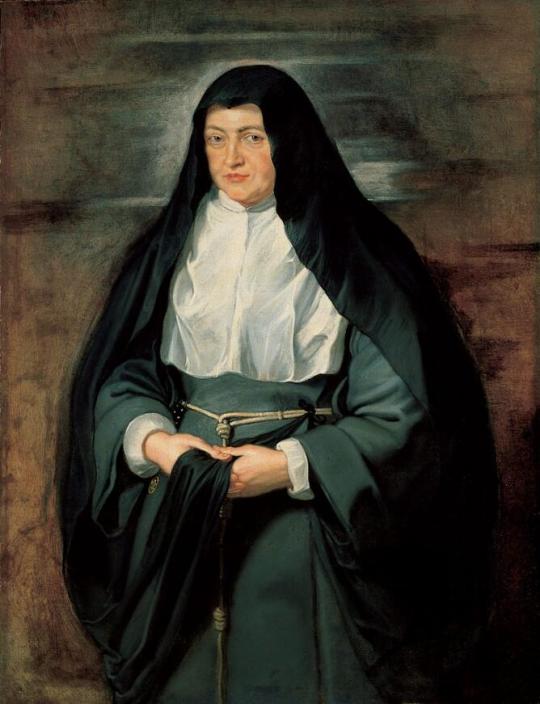

The Infanta Isabella Clara Eugenia (Spanish, 1566-1633): Sovereign of the Netherlands, Duchess of Lothier, Brabant, Limburg, Luxemburg, and Guelders, Margravine of Namur, Countess Palatine of Burgundy, Countess of Flanders, Artois and Hainaut. [source]
1. Attributed to Alonso Sánchez Coello (1531-1588) and Workshop, Isabella Clara Eugenia and Catharina, Daughters of Philip II, King of Spain, c. 1569-70, oil on canvas; The Royal Collection Trust, Green Drawing Room, Buckingham Palace.
2. Alonso Sánchez Coello (Spanish,1531-1588), The Infantas Isabel Clara Eugenia and Catalina Micaela, circa 1575, oil on canvas, Museo del Prado, Madrid.
3. Alonso Sánchez Coello (Spanish, 1531-1588), Infanta Isabella Clara Eugenia, 1577, oil on canvas, Museo del Prado, Madrid.
4. Alonso Sánchez Coello, The Infanta Isabella Clara Eugenia and Magdalena Ruiz, 1586, oil on canvas, Museo Nacional del Prado, Madrid.
5. Juan Pantoja de la Cruz (Spanish, 1553-1608), The Infanta Isabel Clara Eugenia, 1598-99, oil on canvas, Museo del Prado, Madrid.
6. Frans Pourbus the Younger (Flemish, 1569-1622), The Infanta Isabella Clara Eugenia, Archduchess of Austria, c. 1598-1600, oil on canvas.
7. Peter Paul Rubens and Workshop (Flemish, 1577-1640), Portrait of Archduchess Isabella Clara Eugenia, Spanish Regent of the Low Countries, as a Nun, 1625, oil on canvas.
8. Anthony van Dyck (Flemish, 1599-1641), The Infanta Isabella Clara Eugenia, c. 1630, oil on canvas, Walker Art Gallery.
Infanta Isabella Clara Eugenia (Spanish, Segovia, 1566 - 1633, Brussels) was the daughter of Philip II of Spain and his third wife, Elizabeth of Valois, who died after a miscarriage when the Infanta was only two. Her sister Catalina Micaela was one year younger.
She became the sovereign of the Spanish Netherlands in the Low Countries and the north of modern France with her husband, Archduke Albert VII of Austria. She was one of the most powerful women in Europe at the time. The couple had no children. She joined the Sisters of St. Clare order after her co-regent's death.
#infanta isabel clara eugenia#spanish royalty#powerful women#alonso sánchez coello#juan pantoja de la cruz#frans pourbus the younger#peter paul rubens#anthony van dyck#16th century#17th century#european history
34 notes
·
View notes